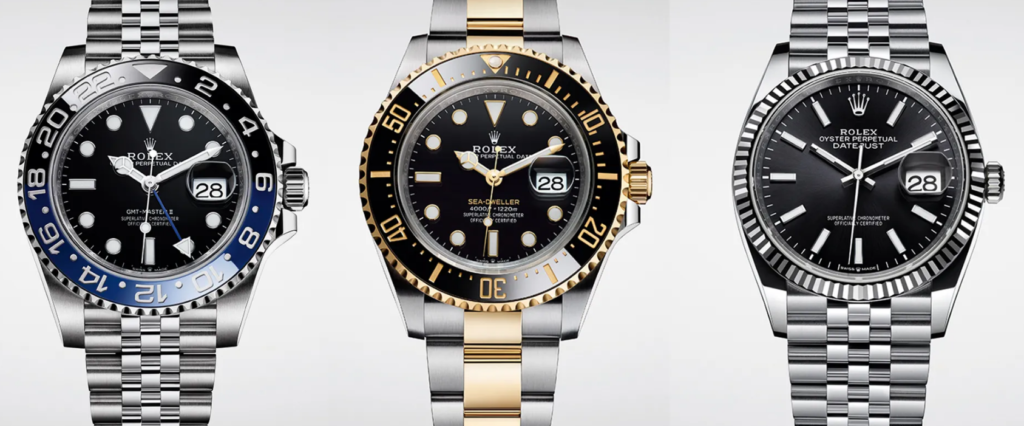Welcome to our blog, where we delve into the world of luxury replica watches and uncover the secrets behind Rolex replicas versus the real deal. As watch enthusiasts, we understand the allure of a well-crafted timepiece, and there’s no denying the status and reputation of owning a genuine Rolex. However, with the rise of replica watches flooding the market, it has become increasingly crucial to spot the differences and make an informed decision. This blog post will share five proven techniques to help you distinguish between a Rolex replica and a genuine Rolex watch. So, whether you’re an avid collector or simply someone who appreciates the beauty and craftsmanship of luxury watches, this article is a must-read. Let’s get started!
Section 1: Understanding the Importance of Spotting a Replica

Before we dive into the techniques, let’s discuss why it’s essential to be able to spot a Rolex replica. First and foremost, buying a replica watch can be a costly mistake. While images may look similar to the untrained eye, they lack the quality and precision that a genuine Rolex offers. Additionally, owning a counterfeit watch may tarnish your reputation as a watch enthusiast. It’s essential to differentiate between a replica and a genuine Rolex to ensure you get the value you’re paying for.
Section 2: Technique 1 – Examining the Movement
The movement mechanism is one of the most significant differences between a replica and a genuine Rolex. Rolex watches are known for their precise and reliable movements, often made in-house. When examining a Rolex, pay attention to the smoothness of the movement’s sweep and how the second hand operates. Replicas often have a noticeable ticking motion, whereas genuine Rolex watches have a continuous and smooth glide.
Section 3: Technique 2 – Evaluating the Weight and Quality of the Watch

Another crucial aspect to consider is the weight and quality of the watch. Rolex watches are crafted with precision and high-quality materials, resulting in a substantial weight. Replicas, on the other hand, are often lighter due to cheaper materials. When holding a Rolex, you should feel the weight and sturdiness in your hand. Pay attention to the overall build quality, including the clasp, crown, and bracelet. Genuine Rolex watches have seamless finishing and solid construction.
Section 4: Technique 3 – Inspecting the Dial and Markings
The dial and markings on a Rolex watch can also reveal whether it’s a replica. Genuine best replica rolex have impeccable attention to detail, with finely printed and engraved markings. The fonts used on the dial should be precise, without any imperfections or inconsistencies. Additionally, examine the Cyclops lens above the date window – on a genuine Rolex, the date will be magnified 2.5 times, whereas replicas often have a smaller or poorly aligned magnification.
Section 5: Technique 4 – Assessing the Materials and Finishing

Rolex watches are renowned for their high-quality materials and flawless finishing. Genuine Rolex cases and bracelets are typically made of stainless steel, gold, or platinum. These materials have a distinct shine and feel luxurious to the touch. Replicas may use cheaper alloys that lack the same luster and durability. Look closely at the finishing details, such as the edges’ smoothness and the engravings’ precision. Genuine Rolex watches will have an exceptional level of craftsmanship in these aspects.
Section 6: Technique 5 – Verifying the Rolex-Specific Features

Several specific features are unique to Rolex watches and can help authenticate them. For example, Rolex models like the Submariner and Sea-Dweller have a unidirectional rotating bezel with a distinct clicking sound. The Triplock crown seal is another feature of many Rolex models, ensuring water resistance. Please familiarize yourself with these authentic Rolex features and check for their presence when examining a watch.
Section 7: Bonus Tips for Spotting a Replica

In addition to the five techniques mentioned above, here are some bonus tips to further help you spot a replica:
Consult a Rolex expert or authorized dealer for advice and authentication.
Compare the watch in question with genuine Rolex images from reliable sources.
Take note of the price – if it seems too good to be true, it probably is.
Examine the serial and model numbers, which should be engraved between the lugs on the side of a genuine Rolex watch.
